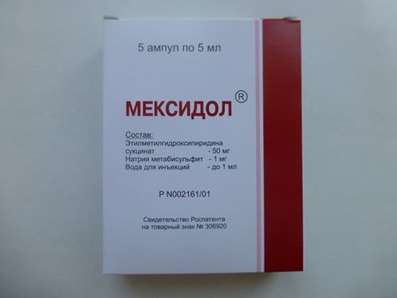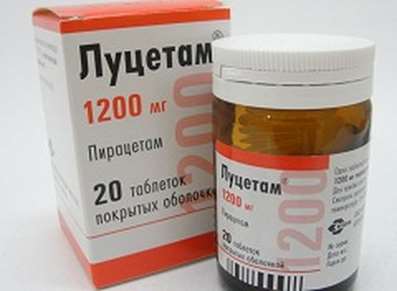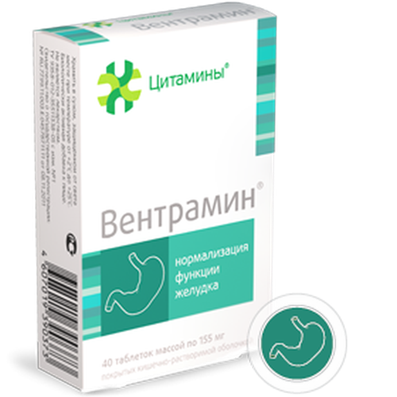Instruction for use: Ciclosporin
I want this, give me price
Trade name of the drug – Consupren, Orgasporin, Panimun Bioral, Restasis, Sandimmun, Ciclosporin, Cyclosporin Sandoz, Ciclosporin HEXAL, Equoral
The Latin name of the substance Ciclosporin
Cyclosporinum (genus. Cyclosporini)
Chemical name
[R- [R *, S * - (E)]] - Cyclic (L-alanyl-D-alanyl-N-methyl-L-leucyl-N-methyl-L-leucyl-N-methyl-L-valyl -3-hydroxy-N, 4-dimethyl-L-2-amino-6-octenoyl-L-alpha-aminobutyryl-N-methylglycyl-N-methyl-L-leucyl-L-valyl-N-methyl-L-leucyl )
Gross formula
C62H111N11O12
Pharmacological group:
Immunosuppressive drugs
The nosological classification (ICD-10)
H20 Iridocyclitis: Recurrent Irritis; Sympathetic iridocyclitis; Sluggish posterior uveitis; Sluggish posterior uveitis; Posterior uveitis; Iridocyclitis of posterior segment of eye; Iridocyclitis and other uveitis; Irit; Keratoididocyclitis; Sharp Irritus; Uveitis; Cyclitis; Acute Iridocyclitis; Acute non-infectious uveitis
L20 Atopic dermatitis: Allergic diseases of the skin; Allergic skin disease noninfectious etiology; Allergic skin disease etiology nemikrobnoy; Allergic skin diseases; Allergic skin lesions; Allergic reactions on the skin; atopic dermatitis; Allergic dermatosis; Allergic diathesis; Allergic itching dermatosis; Allergic skin disease; Allergic skin irritation; allergic Dermatitis; atopic Dermatitis; allergic dermatoses; exudative diathesis; Itchy atopic eczema Itchy allergic dermatosis; Allergic skin disease; Cutaneous allergic reaction to drugs and chemicals; Cutaneous reactions to medications; Skin and allergic disease; Acute eczema; common neurodermatitis; Chronic atopic dermatitis; Exudative diathesis
L40 Psoriasis: Chronic plaque psoriasis with diffuse; generalized psoriasis; Psoriasis of the scalp; hairy parts of the skin; A generalized form of psoriasis; Psoriazoformny dermatitis; Psoriasis complicated with erythroderma; disabling psoriasis; Isolated psoriatic plaque; Eksfolliativny psoriasis; psoriatic erythroderma; Psoriasis with eczematization; Hyperkeratosis in psoriasis; Inverse psoriasis; Psoriasis ekzemopodobnye; dermatoses psoriazoformny; Psoriasis genitals; Psoriasis lesions with hairy areas of the skin; erythrodermic psoriasis; Chronic psoriasis of the scalp; Chronic psoriasis; ordinary psoriasis; refractory psoriasis; Koebner phenomenon; psoriasis
M06.9 Rheumatoid arthritis, unspecified: Rheumatoid arthritis; Pain syndrome in rheumatic diseases; Pain in rheumatoid arthritis; Inflammation in rheumatoid arthritis; Degenerative forms of rheumatoid arthritis; Children's rheumatoid arthritis; Exacerbation of rheumatoid arthritis; Acute articular rheumatism; Rheumatic arthritis; Rheumatic polyarthritis; Rheumatoid arthritis; Rheumatic polyarthritis; Rheumatoid arthritis; Rheumatoid arthritis; Rheumatoid arthritis of active course; Rheumatoid periarthritis; Rheumatoid polyarthritis; Acute rheumatoid arthritis; Acute rheumatism
M35.2 Behcet's disease: Arthritis in Behcet's disease; Uveitis Behcet; Behcet's syndrome; Turena is a big aphthous; Skin rashes with Behcet's syndrome
N03 Chronic nephritic syndrome: Glomerulonephritis chronic; Development of nephrotic syndrome; Syndrome of nephritic chronic; Chronic diffuse kidney disease; Chronic glomerulonephritis
T86.0 Bone marrow transplant rejection: Rejection during bone marrow transplantation
T86.1 Kidney transplant death and rejection: Reaction of acute rejection of a transplanted kidney; Refractory tissue rejection in patients after allogeneic kidney transplantation
T86.2 Dying and rejection of a heart transplant
T86.3 Dying and rejection of the cardiopulmonary graft: The rejection of the combined cardiopulmonary graft
T86.4 Dying and rejection of liver transplant
T86.8 Dying and rejection of other transplanted organs and tissues
CAS Code
59865-13-3
Pharmacology
Mode action - Immunosuppressive.
Specifically and reversibly inhibits G0 and G1 phases of the cell cycle of immunocompetent lymphocytes, especially T-helpers, inhibits the formation and exit of interleukin-2 cells and its binding to specific receptors. It disrupts the differentiation and proliferation of T cells involved in graft rejection.
It is quickly and completely absorbed from the digestive tract. The time to achieve Cmax after oral administration varies from 1 to 6 hours. Absolute bioavailability is 20-50%. Binding to plasma proteins (mainly lipoproteins) is about 90%. It is distributed mainly outside the bloodstream, although it is found in erythrocytes, granulocytes, and lymphocytes. The apparent volume of distribution is 3.5 l / kg. In the liver with the participation of cytochrome P450-dependent monooxygenase system is hydroxylated and N-demethylated. All metabolites (more than 15) contain an intact initial peptide base, some have weak immunosuppressive activity. T1 / 2 varies from 6.3 h to 20.4 h. It is excreted mainly with bile, about 6% of the dose is detected in urine, less than 1% in unchanged form.
Increases (especially in combination with prednisolone and azathioprine) the survival rate after transplantation of the cadaveric kidney and reduces the incidence of rejection crises and "graft versus host" reactions. Lengthens the preservation of allogeneic grafts of the skin, heart, lungs and other organs. It is effective in bone marrow transplantation, severe exacerbations of Crohn's disease, which are not amenable to usual treatment, rheumatoid arthritis.
Application of the substance Ciclosporin
Transplantation of the kidney, liver, heart, lung, pancreas (prevention of graft rejection, treatment of rejection reaction), bone marrow (prevention of rejection reaction, prevention and treatment of graft-versus-host disease); Acute non-infectious uveitis, threatening vision loss, Behcet's uveitis with recurrent inflammation and retinal involvement, chronic glomerulonephritis accompanied by nephrotic syndrome development, rheumatoid arthritis with high activity, psoriasis, severe forms of atopic dermatitis.
Contraindications
Hypersensitivity (including to polyoxyethylated castor oil), malignant neoplasms, severe infectious diseases, impaired renal and / or liver function, arterial hypertension, hyperuricemia, hyperkalemia, pregnancy, breast-feeding.
Application of pregnancy and breastfeeding
The action category for fetus by FDA is C.
Side effects of the substance Ciclosporin
Acute and chronic renal failure, interstitial renal fibrosis, arterial hypertension, tremor, weakness, headache, paresthesia, convulsive seizures, myopathy, impaired liver function, pancreatitis, nausea, vomiting, anorexia, abdominal pain, epigastric gravity, diarrhea , Gingival hyperplasia, fluid retention in the body, reversible dysmenorrhea and amenorrhea, hypertrichosis, thrombocytopenia, anemia, hyperkalemia, hyperuricemia, increased susceptibility to infections.
Interaction
Melphalan increases toxicity, diltiazem, nicardipine, verapamil, beta-adrenoblockers, fluconazole, imidazole derivatives, glucocorticoids, macrolides - a level in the plasma. Increases the risk of myopathy and rhabdomyolysis in the administration of lipid-lowering drugs (HMG-CoA reductase inhibitors), renal dysfunction - aminoglycoside, amphotericin B, trimethoprim, co-trimoxazole, ciprofloxacin, certain cephalosporins, NSAIDs, propafenone. Phenytoin, carbamazepine, barbiturates, benzodiazepine derivatives, aminoglutethimide, estrogen-progestogen, progesterone, rifampicin, isoniazid, metamizole sodium weaken the effect - accelerate elimination. Strengthens the action of quinidine, theophylline, sodium valproate, as well as potassium and potassium-sparing diuretics (the probability of hyperkalemia increases).
Update of information
Cyclosporine + amiodarone
In patients receiving amiodarone, an increase in the level of cyclosporine in the serum was observed, and as a result, nephrotoxicity was noted. On the contrary, one report describes a slight decrease in the level of cyclosporine and an increase in the level of amiodarone; in another case, pulmonary toxicity is reported in a patient who stopped taking amiodarone and started taking cyclosporine.
Clinical evidence
Eight patients with cardiac and 3 with cardiopulmonary transplants receiving cyclosporine were also assigned amiodarone (a dose not established) for the treatment of atrial flicker-flutter. Despite a 13-20% reduction in the dose of cyclosporine, its serum level increased by 9%, the level of serum creatinine increased by 38% (from 157 to 216 μmol / l), and blood urea nitrogen by 30% 1.
In another report, there was a 50% reduction in the clearance of cyclosporine in one patient after administration of amiodarone (1 g, then 600 mg daily for 5 days, then 400 mg daily) 2.
Eight other patients with cardiac or cardiopulmonary transplants were effectively treated with amiodarone (dose not established) due to flicker and / or atrial flutter. They had a 31% increase in serum ciclosporin (from 248 to 325 ng / ml), despite a 44% decrease in its dose (from 6.2 to 3.5 mg / kg / day). The level of serum creatinine increased by 39% 3.
In a patient with a transplanted kidney, the level of cyclosporin in the serum after taking amiodarone 600 mg twice a day was increased 2 times4.
In contrast, in 5 patients with heart transplantation amiodarone was withdrawn, and cyclosporine was prescribed, but the cyclosporin metabolism time was increased by 4-5 weeks compared to patients not receiving amiodarone (plasma metabolites level increased from 720 to 1437 ng / ml). Values of the level of cyclosporine were only slightly reduced in patients receiving amiodars compared with those who did not receive it (225 ng / ml and 240 ng / ml, respectively) 5. In this study, 2 patients were monitored for amiodarone, and plasma concentrations of amiodarone and its main metabolite, desethylamiodarone, were also increased by 4-5 weeks. During this period, there was also an increase in adverse effects, including pulmonary toxicity5.
The mechanism of this interaction is unclear.
Meaning and caution
An increase in the level of cyclosporine in the administration of amiodarone is an established and clinically important interaction. There is no need to avoid the combined use of cyclosporine and amiodarone, but careful monitoring is necessary and, to reduce the risk of nephrotoxicity, a dose reduction of cyclosporine may be necessary.
It is necessary to remember the possibility of adjusting the dose of cyclosporine in connection with the abolition of amiodarone, since it may take weeks for the complete removal of amiodarone from the body.
The significance of increasing the level of amiodarone, reducing the level of cyclosporine and the case of pulmonary toxicity in patients who stopped taking amiodarone and started taking cyclosporine are unclear.
The source of information
Stockley's Drug Interactions / Ed. By Karen Baxter. - 9th ed. - London - Chicago, Pharmaceutical Press, 2010.- P. 1214.
Original articles
1. Egami J., Mullins P.A. Maprin F. et al. Increase in cyclosporine levels due to amiodarone therapy after heart and heart-lung transplantation // J. Am. Coll. Cardiol .- 1993.- 21.- P. 141A.
2. Nicolau D. P., Uber W. E., Crumbley A.J. Et al. Amiodarone-cyclosporine interaction in a heart transplant patient // J. Hearth Lung Transplant .- 1992.- 11.- P. 564-568.
3. Mamprin F., Mullins P., Graham T. et al. Amiodarone-cyclosporine interaction in a heart transplantation // Am. Heart J.- 1992.- 123.- P. 1725-1726.
4. Chitwood K.K., Abdul-Haqq A.J., Heim-Duthoy K.L. Cyclosporine-fmiodarone-interaction // Ann. Pharmacother .- 1993.- 27.- P. 569-571.
5. Preuner, J.G., Lehle K., Keyser A. et al. Development of severe adverse effects after discontinuing amiodarone therapy in human heart transplant recipients // Transplant. Proc.- 1998.- 30.- P. 3943-3944.
Cyclosporine + proton pump inhibitors
Omeprazole usually does not affect the serum level of cyclosporine, but there are individual reports of a 2-fold increase in the concentration of cyclosporine in one patient, and a decrease of more than 2 times in another. Pantoprazole does not affect the level of cyclosporine in the serum.
Clinical evidence
A) Omeprazole
In a placebo-controlled study, 10 patients with renal transplants showed no significant changes in the level of cyclosporine when omeprazole was administered at 20 mg / day for 2 weeks1. In another study, in 8 patients with renal transplants, similar results were obtained: after application of omeprazole 20 mg for 6 days, significant changes in the level of cyclosporine were absent compared to the control - patients who did not take omeprazole. There were no significant changes in serum ciclosporin and in patients with renal transplants after administration of 20 mg / day of omeprazole for 8 weeks.
However, in one retrospective analysis, the dose of cyclosporine required to provide a certain level was 28% lower when 21 patients received omeprazole (a dose not determined) compared with 139 patients who did not take omeprazole4. There is also a case in which a patient with a hepatic transplant increases the cyclosporine level approximately 2-fold (from 187-261 to 510 ng / ml) approximately 2 weeks after the start of omeprazole therapy (40 mg / day). The level of cyclosporine was restored after a dose reduction of cyclosporine from 130 to 80 mg twice a day. Then the level was stabilized (about 171 ng / ml) for the next 4 months5. In contrast, another patient with bone marrow transplantation showed an inverse interaction: the serum ciclosporin level during treatment with omeprazole (40 mg / day) decreased from 254 to about 100 ng / ml for 14 days and again rose rapidly after it was discontinued6.
B) Pantoprazole
Studies in patients with kidney transplant showed that pantoprazole (40 mg / day daily) does not affect serum levels of cyclosporine if it is taken in the evening7 or when combined with both drugs in the morning8.
The mechanism of this interaction is incomprehensible.
Meaning and caution
There is strong evidence that omeprazole at a dose of 20 mg daily does not affect the pharmacokinetics of cyclosporine, and it is also clear that pantoprazole (40 mg daily) does not interact with cyclosporine. There is no explanation for the increase or decrease in the level of cyclosporine in two separate cases in patients who received daily omeprazole at a dose of 40 mg. There is no need to avoid simultaneous use of cyclosporine and proton pump inhibitors, but it is necessary to keep in mind the possibility of interaction and caution if the patient takes high doses of omeprazole and the level of cyclosporine changes in one direction or the other.
The source of information
Stockley's Drug Interactions / Ed. By Stockley.-9th ed, 2010.- P. 1250.
Original articles
1. Blohme I., Idstrom J.-P., Andersson T. A study of the interaction between omeprazole and cyclosporine in renal transplant patients// Br. J. Clin. Pharmacol.- 1993.- 35.- P. 156-160.
2. Kahn D., Manas D., Hamilton H. et al. The effect of omeprazole on cyclosporine metabolism in renal transplant recipients// S. Afr. Med. J.- 1993.- 83.- P. 785.
3. Castellote E., Bonet J., Lauzirica R. et al. Does interaction between omeprazole and cyclosporib exist?// Nephron.- 1993.- 65.- 478.
4. Reichenspurner H, Meiser BM, Muschiol F, Nollert G, Uberfuhr P, Markewitz A, Wagner F, Pfeiffer M, Reichart B. The influence of gastrointestinal agents on resorption and metabolism of cyclosporine after heart transplantation: experimental and clinical results. J Heart Lung Transplant (1993) 12, 987-92.
5. Schouler L., Dumas F., Couzigou P. et al. Omeprazole-cyclosporin interaction// Am. J. Gastroenterol.- 1991.- 86.- P. 1097.
6. Arranz R., Yanez E., Franceschi J.L. et al. More about omeprazole-cyclosporine interaction// Am. J. Gastroenterol.- 1993.- 88.- P. 154-155.
7. Lorf T., Ramadori G., Ringe B. et al. Pantoprazole does not affect cyclosporin A blood concentration in kidney-transplant patients// Eur. J. Clin. Pharmacol.- 2000.- 55.- P. 733-735.
8. Lorf T., Ramadori G., Ringe B. et al. The effect of pantiprazole on tacrolimus and cyclosporin A blood concentration in transplant patients// Eur. J. Clin. Pharmacol.- 2000.- 56.- P. 439-440.
9. Schwrer H., Lorf T., Ringe B. et al. Pantoprazole and cyclosporine or tacrolimus// Aliment. Pharmacol. Ther.- 2001.- 15.- P. 561-562.
Cyclosporine + griseofulvin
There is a separate report on a decrease in the level of cyclosporine in a patient taking griseofulvin, whereas in another report no interaction was found.
Clinical evidence, mechanism, meaning and caution
A 57-year-old man, who took ciclosporin, azathioprine and prednisolone for almost 1 year after kidney transplantation, began taking 500 mg griseofulvin daily due to onychomycosis. After 2 weeks he had a decrease in the level of cyclosporine from 90 ng / ml to 50 ng / ml and, despite an increase in the dose of cyclosporine from 2.8 to 4.8 mg / kg, the level of cyclosporine remained low. Later, when griseofulvin was withdrawn, the level of cyclosporin increased to 200 ng / ml and the dose of cyclosporine was adjusted1. On the contrary, the authors of another report note that there was no significant interaction in the case when griseofulvin at a dose of 1 g was applied daily for 8 weeks to treat the dermatomycosis of the scalp: in a patient with a transplanted kidney taking a cyclosporine, the functioning of the graft remained stable2.
As for the only report on the interaction with griseofulvin - its significance is unclear.
The source of information
Stockley's Drug Interactions / Ed. By Stockley.-9th ed, 2010.- P. 1241.
Original articles
1. Abu-Romeh S.H., Rashed A. Cyclosporin A and griseofulvin: another drug interaction// Nephron.- 1991.- 58.- P. 237.
2. Chen CH, Wen MC, Cheng CH, Wu MJ, Yu TM, Chuang YW, Shu KH. Infectious alopecia in a dog breeder after renal transplantation. J Chin Med Assoc (2008) 71, 477-80.
Overdose
Symptoms: vomiting, drowsiness, headache, tachycardia, severe renal failure.
Treatment: stimulation of vomiting and gastric lavage (in the first hours after oral administration), maintenance of vital functions; Dialysis and hemoperfusion with activated charcoal are ineffective.
Routes of administration
Inside, IV.
Precautions for the substance Ciclosporin
Treatment should be conducted in a specialized hospital setting by physicians with sufficient experience of immunosuppressant therapy. It should be borne in mind that against the background of cyclosporine, a predisposition to lymphoproliferative malignancy increases, and therefore, before its appointment it is necessary to decide how much the expected beneficial effect justifies the risk of undesirable effects. The use during pregnancy is permissible only on strict indications. Since there is a possibility of developing anaphylactoid reactions with intravenous administration, it is advisable to use prophylactic antihistamines, and to transfer the patient as quickly as possible to oral leukemia. It is recommended to choose a dose depending on the content in the blood. After kidney transplantation, the level in the plasma is determined during the first 2 weeks 2 times a week, for 3-6 weeks - 1 time per week, for outpatient observation - 1 time in 2-3 months. Regular monitoring of the plasma creatinine concentration is necessary - the increase may indicate a rejection reaction or a nephrotoxic effect and require (in the latter case) dose reduction: by 25% with an increase in creatinine by more than 30% from the baseline and by 50% if its level Doubles; When a dose reduction for 4 weeks does not lead to a decrease in creatinine, cyclosporine is canceled. It is recommended to monitor blood pressure, blood levels of potassium, uric acid, bilirubin, transaminases, lipid profile, immunization with live attenuated vaccines is contra-indicated during treatment. In the therapy of autoimmune diseases, the lack of adequate positive results after 3 months indicates the need for discontinuation of treatment.
Special instructions
For the preparation of an infusion solution, it is desirable to use glass containers.

 Cart
Cart




